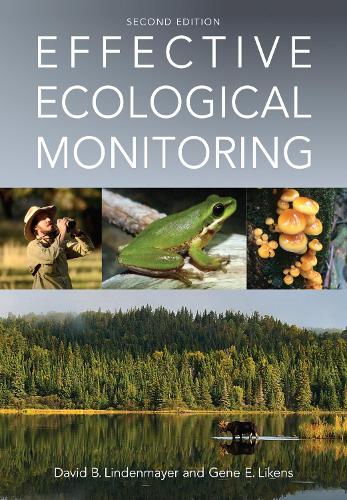
Effective Ecological Monitoring
(Paperback, Second Edition)
Publishing Details
Effective Ecological Monitoring
By (Author) David Lindenmayer
By (author) Gene Likens
CSIRO Publishing
CSIRO Publishing
1st May 2018
Second Edition
Australia
Classifications
Professional and Scholarly
Non Fiction
Ecological science, the Biosphere
Biodiversity / Ecosystems
Limnology (inland waters)
Marine biology
Applied ecology
Wildlife: general interest
363.7063
Physical Properties
Paperback
224
Width 170mm, Height 245mm, Spine 13mm
418g
Description
Long-term monitoring programs are fundamental to understanding the natural environment and managing major environmental problems. Yet they are often done very poorly and ineffectively. This second edition of the highly acclaimed Effective Ecological Monitoring describes what makes monitoring programs successful and how to ensure that long-term monitoring studies persist. The book has been fully revised and updated but remains concise, illustrating key aspects of effective monitoring with case studies and examples. It includes new sections comparing surveillance-based and question-based monitoring, analysing environmental observation networks, and provides examples of adaptive monitoring. Based on the authors 80 years of collective experience in running long-term research and monitoring programs, Effective Ecological Monitoring is a valuable resource for the natural resource management, ecological and environmental science and policy communities.
Reviews
Review of the first edition:
"Lindenmayer and Likens have distilled decades of experience into a book about how to study the long, large, and slow processes of ecological change....This volume illuminates the practical as well as the deep intellectual challenges of long-term science."-- "Quarterly Review of Biology"
Author Bio
David Lindenmayer is a Research Professor at The Australian National University who has specialised in established large-scale, long-term ecological monitoring and research programs that have extended for more than 35 years in many different parts of south-eastern Australia.
Professor Gene Likens is one of the worlds most highly decorated scientists and widely recognised for his pioneering and ground-breaking work on acid rain in north-eastern USA.
